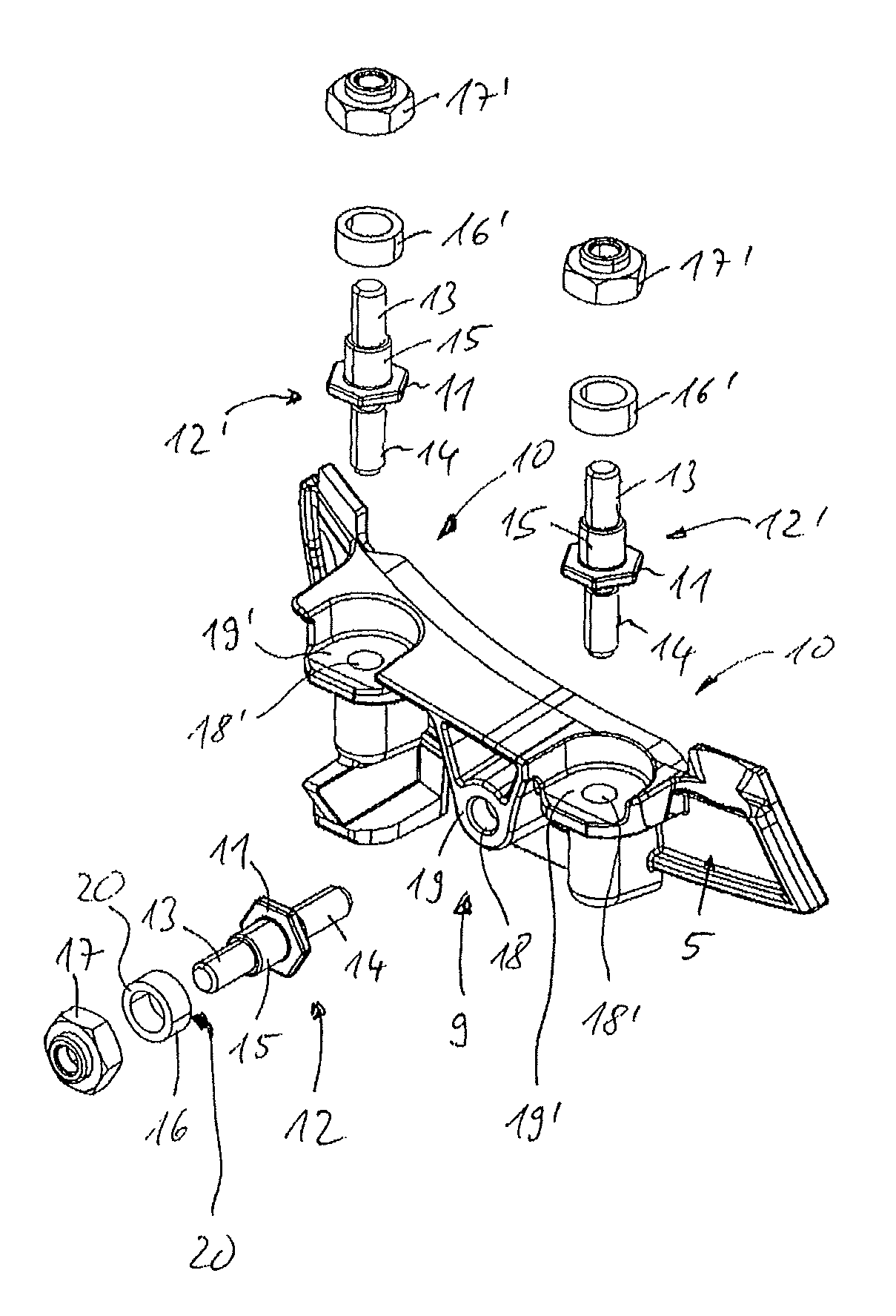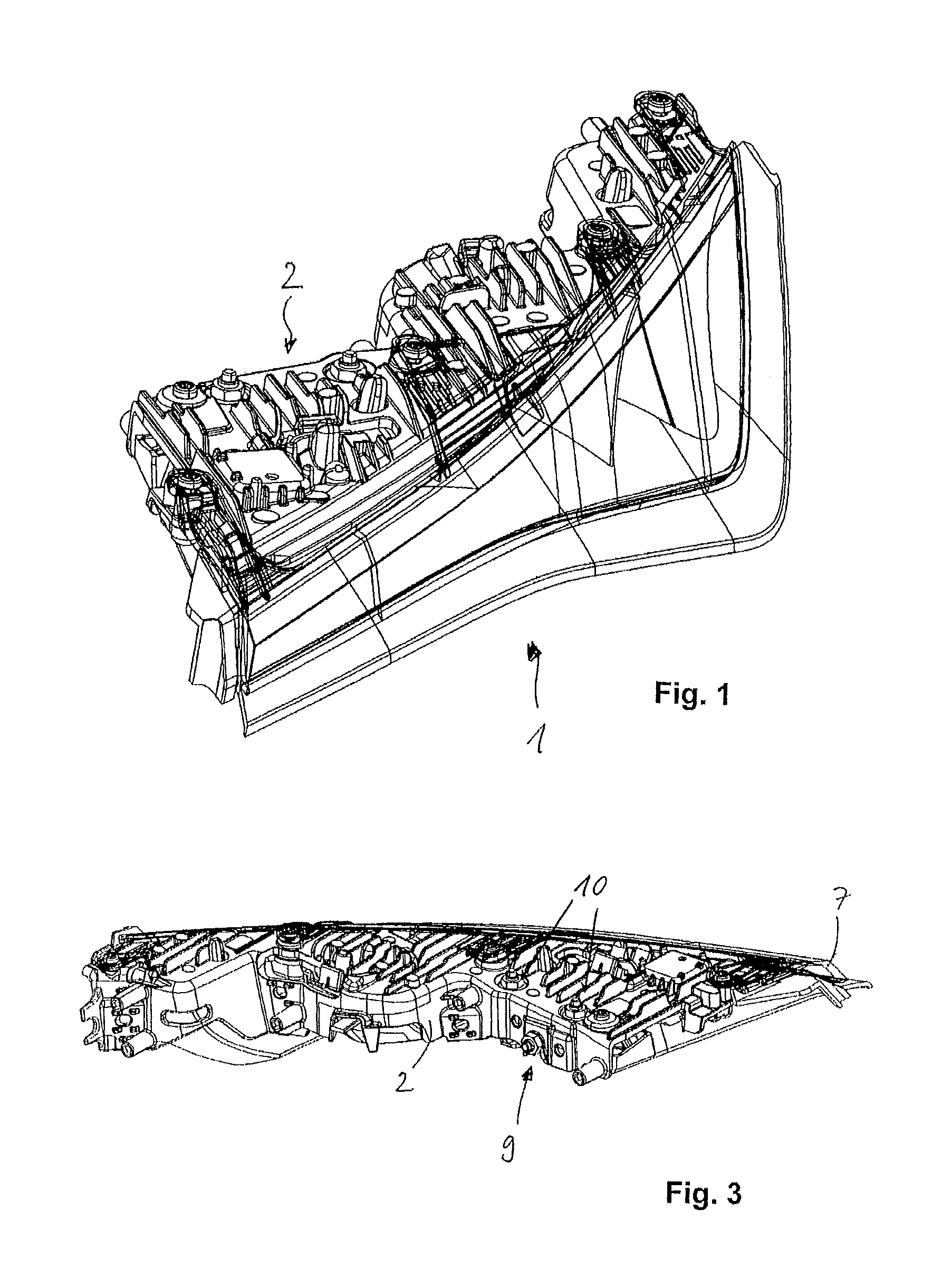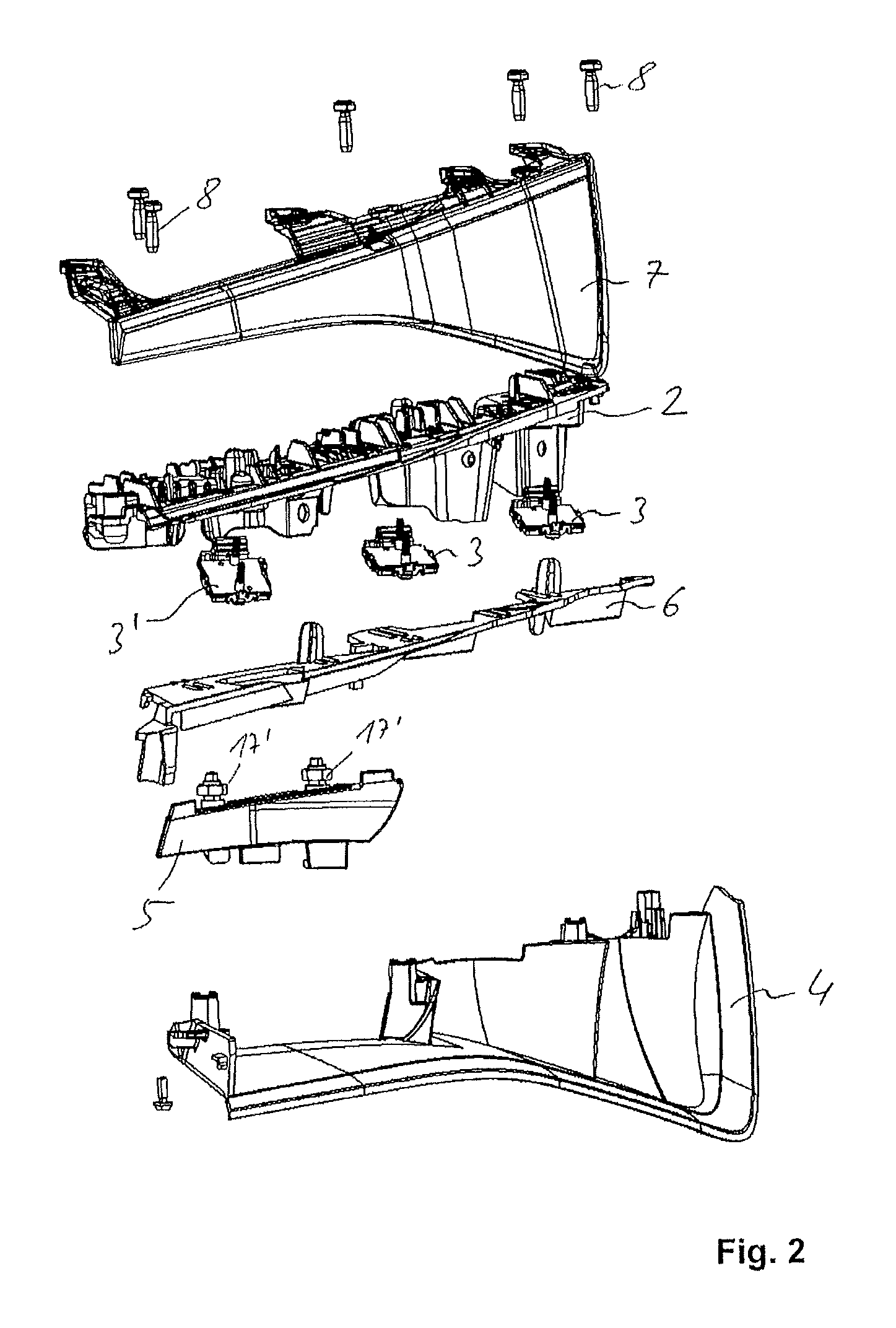Adjusting device for headlights
a technology for adjusting devices and headlights, which is applied in fixed installation, electric lighting, lighting and heating apparatus, etc. it can solve the problems of large installation space, large number of components, and achieve low static friction and distorting light image.
- Summary
- Abstract
- Description
- Claims
- Application Information
AI Technical Summary
Benefits of technology
Problems solved by technology
Method used
Image
Examples
Embodiment Construction
[0018]In the following detailed description numerous specific details are set forth in order to provide a thorough understanding of the invention. However, it will be understood by those skilled in the art that the present invention may be practiced without these specific details. For example, the invention is not limited in scope to the particular type of industry application depicted in the figures. In other instances, well-known methods, procedures, and components have not been described in detail so as not to obscure the present invention.
[0019]A headlight 1 according to the invention is used to generate a high beam distribution and a highway beam distribution in the frontal area of a motor vehicle.
[0020]The headlight 1 comprises a carrier 2 designed as a cooling element, from one side of which LED light sources 3, 3′ are mounted. The two LED light sources 3 cooperate with a high beam reflector 4 as luminous component to generate a high beam distribution. The single LED light so...
PUM
 Login to View More
Login to View More Abstract
Description
Claims
Application Information
 Login to View More
Login to View More - R&D Engineer
- R&D Manager
- IP Professional
- Industry Leading Data Capabilities
- Powerful AI technology
- Patent DNA Extraction
Browse by: Latest US Patents, China's latest patents, Technical Efficacy Thesaurus, Application Domain, Technology Topic, Popular Technical Reports.
© 2024 PatSnap. All rights reserved.Legal|Privacy policy|Modern Slavery Act Transparency Statement|Sitemap|About US| Contact US: help@patsnap.com










